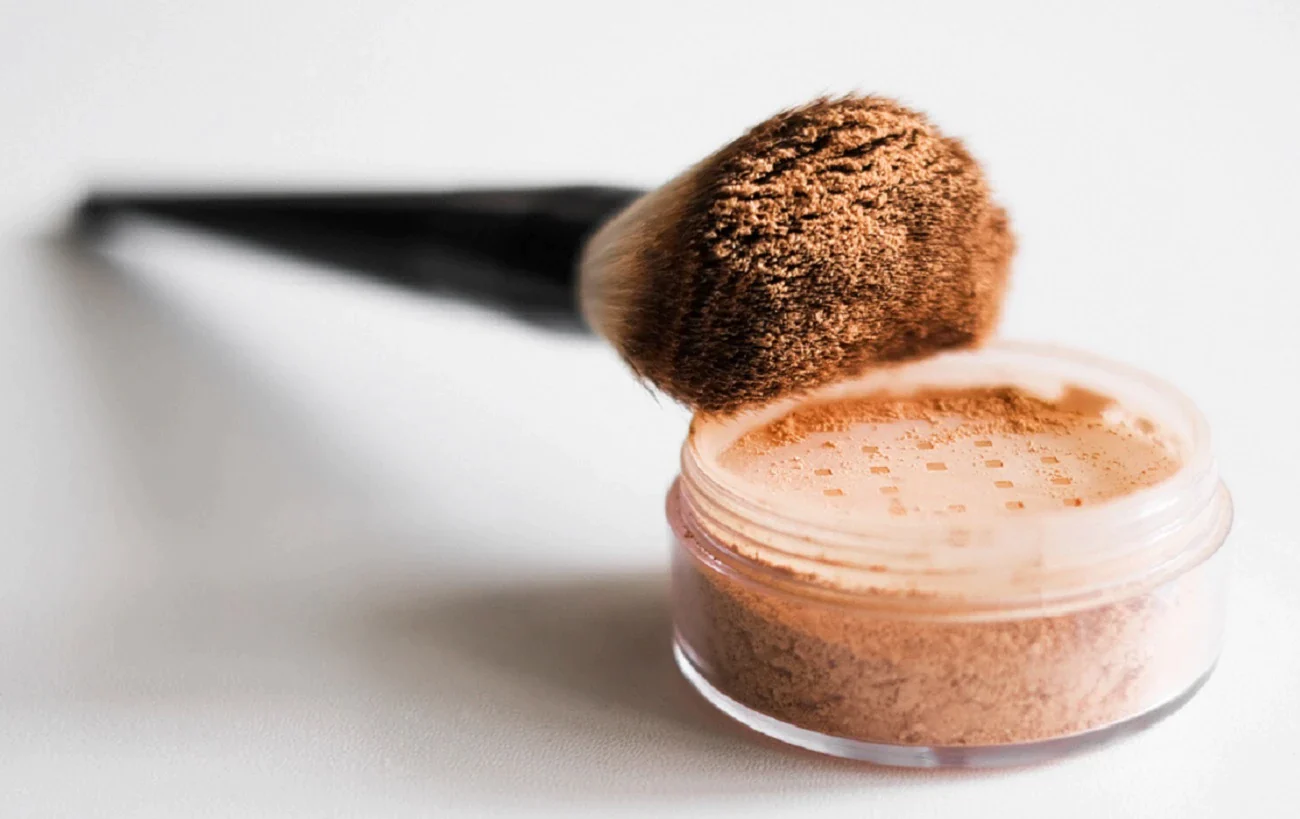Application of ultra-fine grinding technology in cosmetics
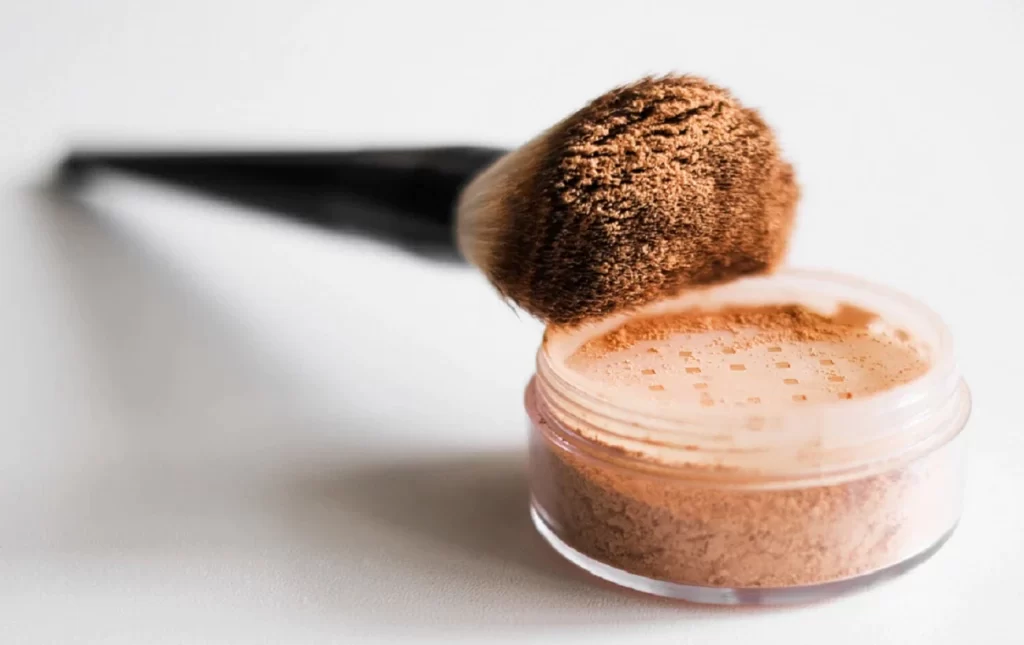
Ultrafine grinding refers to the unit operation of crushing coarse-grained materials to a particle size of less than 10~25 μm. When the material is crushed to a particle size of less than 10 μm, the ultra-fine particles have high surface activity, void ratio and surface energy, thus giving the material Excellent solubility, adsorption, fluidity and unique optical, electrical, magnetic and other properties. Ultra-fine grinding technology is widely used in food, medicine, information materials, microelectronics, thermal insulation materials, advanced refractory materials, high-tech ceramics, Coatings, fillers and new material industries.、
As one of the most effective equipment for ultra-fine pulverization of powders, jet pulverizer uses supersonic airflow to impact materials to cause the materials to collide with each other to achieve the purpose of ultra-fine pulverization. Therefore, the jet pulverizer equipment is simple to operate, pollution-free, and has high product purity. High, good activity maintenance, good powder dispersion, small particle size and narrow distribution, smooth particle surface, especially suitable for ultra-fine crushing of heat-sensitive and moisture-sensitive drugs.
With the rapid development of the cosmetics industry in the past 20 years, a large number of bioactive substances and Chinese herbal medicine powders have been widely used in various cosmetics. However, the raw materials have large particles and are difficult to dissolve in water at low temperatures or are difficult to be absorbed by the skin when applied directly. By ultrafinely crushing the active ingredients, the dissolution temperature of the active ingredients can be greatly reduced, which is beneficial to the maintenance of activity and transdermal absorption. In addition, airflow crushing technology is used in the manufacturing of high-end pressed powder cosmetics to improve the powder structure and greatly improve the pressed powder performance and product quality. Airflow crushing technology has broad application prospects in the cosmetics industry.
1) Micronization technology is a complete set of processes and technologies, and it is a systematic process that must meet the requirements of cosmetics hygiene standards during the manufacturing process of cosmetics. To apply it to the industrialization of cosmetics, we should also combine the characteristics of the cosmetics industry to design ultra-fine grinding equipment that is easy to clean and disinfect, does not pollute products during the manufacturing process, does not produce dust, and has low energy consumption.
2) Strengthen the basic theoretical research on ultra-fine grinding, combine the properties of various powders, conduct module design on the basis of experiments, establish data models, develop multi-functional, integrated airflow grinding equipment, and improve comprehensive supporting performance and automatic control capabilities With the processing capacity of a single machine, it can obtain ultrafine powder with narrow particle size distribution, and can be adapted to the processing of materials with different characteristics and various hardnesses.
3) Find effective ways to reduce the wear and tear of airflow grinding equipment during crushing, extend the service life of the equipment, and reduce product pollution. Focus on solving the material problems of the airflow grinding chamber and nozzle ring, and develop alloy materials with high wear resistance. In addition, appropriate process flow is also an effective measure to reduce airflow abrasion.
4) Find effective ways to reduce energy consumption and improve energy utilization, and overcome the biggest shortcoming of low energy utilization of jet mills.
5) The development of airflow grinding technology will provide technical support for the development of high-quality, high-tech, and excellent cosmetics and enhance the market competitiveness of products. Airflow grinding technology can not only be widely used in pressed powder cosmetics and facial mask products, but also has broad application prospects in the pretreatment of active raw materials and Chinese herbal medicines.
Grinding of API in Oral Solid Dosage Process

In the production process of oral solid dosage forms, bulk drug crushing is often an extremely critical unit operation. On the one hand, the particle size of the API may affect drug absorption. For poorly soluble oral solid preparations, the smaller the particle size of the raw material, the faster the dissolution, and the bioavailability of the drug may also be improved. In addition, the particle size of the API has an important impact on the fluidity of the powder, the mixing process and the stratification of the powder, and these factors have an important impact on the stability of the production process.
In the synthesis process, raw materials for oral solid dosage forms are often obtained by crystallization. By controlling the crystallization process, the particle size of the raw material drug can be controlled to a certain extent. However, in many cases, the particle size and particle size distribution of the API obtained by crystallization often cannot meet the needs of the preparation. Therefore, it is necessary to further process the API during preparation production, that is, crush the API to control the particle size within the target range.
Generally speaking, grinding methods can be divided into dry and wet methods according to the different media dispersed during grinding. The wet method is to disperse the API in a liquid medium for pulverization, while the dry method is to pulverize the API in a gas (air, nitrogen, etc.). The dry method is mostly used for crushing raw materials of solid preparations.
The crushing principle of the hammer mill is mainly to continuously beat the raw drug particles through high-speed rotating hammers/hammers, and the particles further collide with the crushing cavity or between particles. These processes can effectively reduce the particle size. When the particle size is small enough to pass through the selected sieve holes, it will be discharged from the crushing chamber. The hammer mill has a large production capacity and low energy consumption, and is more suitable for crushing brittle drugs. Some viscous materials are not prone to particle breakage through mechanical beating and are not suitable for hammer crushing. However, the materials can be cooled to increase the brittleness of the materials and increase the ease of crushing. In addition, hammer crushing generates serious heat, so attention must be paid to the stability of the material. Compounds with a melting point lower than 100°C are not suitable for mechanical crushing methods such as hammer crushing. Hammer mills are generally suitable for crushing particle sizes above 10 μm. Factors related to the crushing effect of the hammer mill generally include the shape and installation method of the hammer blade, rotation speed and feed speed, etc.
Spiral jet pulverizer is a relatively common airflow pulverizer with relatively simple mechanical structure and crushing operation. The pressurized air flow brings the materials into the crushing chamber at a certain speed through the feeding nozzle. There are several nozzles on the same plane around the annular crushing chamber, which spray airflow with a speed of up to 300~500 meters/second into the crushing chamber, forming a vortex airflow, causing the particles entering the crushing chamber to move at high speed with the airflow, and the particles and other particles or the crushing chamber The body was shattered by violent collision and friction. The crushing process mainly involves the collision between particles, followed by the collision between particles and the crushing cavity. The circular motion of particles in the airflow will generate a certain centrifugal force. As the crushing progresses, the particle size and mass decrease, and the centrifugal force received becomes smaller and smaller. When the centrifugal force is small enough, the airflow discharged from the crushing chamber will bring the particles to the center of the vortex airflow, and then be discharged from the crushing chamber with the airflow to complete the crushing process. This vortex airflow allows the crushing and classification processes to be carried out simultaneously, which is beneficial to obtaining a final product with a narrower particle size distribution.
Application and research of modified wollastonite
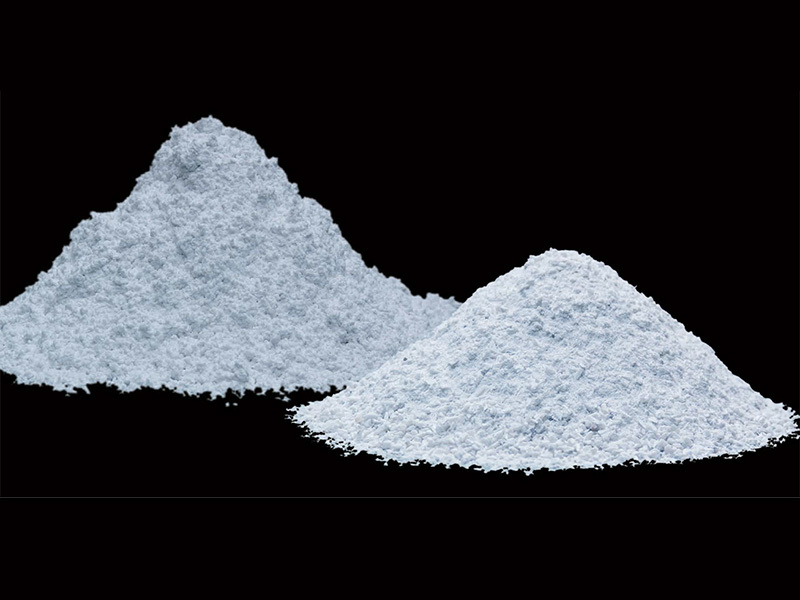
Wollastonite is an extremely important non-metallic mineral. Its main chemical composition is calcium metasilicate (CaSiO3). It belongs to the trigonal crystal system and is gray-white. Wollastonite has a large aspect ratio, a natural needle-like structure, and stable performance, making it an excellent reinforcing material. In addition to its natural fibrous structure, wollastonite also has extremely low oil absorption, electrical conductivity and dielectric loss. It is widely used in plastics, rubber, paints, coatings and other fields, and can significantly improve the mechanical and tribological properties of the matrix. Improve the thermal stability and dimensional stability of products.
However, natural wollastonite is hydrophilic, and when blended with organic polymers, the dispersion is uneven due to different polarities, thus reducing the mechanical properties of its filled products. In order to improve its dispersion and compatibility in organic matrices, as well as the mechanical properties of products, wollastonite often needs to be surface modified.
Wollastonite modification technology
The surface modification technology of wollastonite can be divided into: organic surface modification and inorganic surface modification.
For organic surface modification, commonly used surface modifiers include silane coupling agents, titanate and aluminate coupling agents, surfactants, and methyl methacrylate. Among them, silane coupling agent modification is one of the commonly used surface modification methods for wollastonite powder, and dry modification process is generally used. The dosage of coupling agent is related to the required coverage and the specific surface area of the powder. The dosage is generally 0.5% to 1.5% of the wollastonite mass.
The technical background of inorganic surface modification is that wollastonite as a polymer filler often causes the filler material to become darker in color, has a larger wear value, and easily wears processing equipment; inorganic surface coating modification can improve the silicone Gray stone fiber fills the color of polymer materials and reduces their wear value. At present, the inorganic surface modification of wollastonite mineral fibers mainly uses chemical precipitation method to coat the surface with nanometer calcium silicate, silica and nanometer calcium carbonate.
Application and research of modified wollastonite
(1) Plastic
Polypropylene (PP), as one of the five general-purpose plastics, has better comprehensive properties than other general-purpose plastics. It is increasingly widely developed and used in the fields of automobiles, aerospace, construction and medicine.
(2) Papermaking
The application of wollastonite in the paper industry is quite different from other fillers. It is not a simple filling like traditional fillers. It mainly relies on a higher aspect ratio to realize the interweaving of wollastonite and plant fibers to form plant fibers. The network structure of fiber-mineral fiber can replace some short fibers of plants, which can effectively improve the opacity and printing adaptability of produced paper, improve uniformity and reduce manufacturing costs.
(3) Friction materials
Wollastonite products for friction materials are wollastonite needle-like powders. Compared with traditional application scenarios, they are mostly used as fillers in brake pads, clutches, etc. The acicular powder of wollastonite is an ideal substitute for short fiber asbestos. It can improve the stability of friction materials, reduce cracking, improve wear resistance and recovery properties and other mechanical properties to a certain extent.
(4) Coating
Wollastonite can be used as an extender pigment and a partial substitute for white pigments in paints. In addition, according to the characteristics of wollastonite itself, it can also be used as a coating modification additive to expand the functionality of the material. For example, wollastonite has good corrosion resistance and can be widely used in the field of anti-corrosion coatings.
(5) Rubber
In the rubber industry, wollastonite powder can replace part of titanium dioxide, white carbon black, clay, light calcium, lithopone and other materials, play a certain reinforcing effect, and can improve the hiding power of some colorants.
(6) Cement/fiber reinforced concrete
Fibrous wollastonite replaces short asbestos fibers and glass fibers and is added to cement, concrete and other building materials, which can improve the impact resistance, bending strength, wear resistance and dimensional stability of the materials.
The importance of silicon carbide powder modification process
![]()
Silicon carbide (SiC) is an inorganic non-metallic material with a wide range of uses and good development prospects. After being made into ceramics, it is an excellent structural material. It has high elastic modulus and specific stiffness, is not easy to deform, and has High thermal conductivity and low thermal expansion coefficient have now become one of the main considerations for high-temperature heat engine materials, and can be used in high-temperature nozzles, turbine blades, turbocharger rotors, etc.
Therefore, the industry has put forward higher requirements for SiC ceramics in terms of geometric accuracy, strength, toughness and reliability, and the molding process is a crucial part. Different molding processes have a greater impact on the performance of ceramic products, such as difficulty in demoulding, difficulty in preparing products with complex shapes, insufficient density of ceramics, etc. The existence of these defects will restrict their application in high-end fields. Therefore, it is necessary to To prepare ceramic products with excellent performance and high reliability, it is necessary to explore the factors that affect the effectiveness of the molding process.
The silicon dioxide layer on the surface of silicon carbide will affect the dispersion of the powder in the aqueous phase. The silicon dioxide will form silicon hydroxyl groups "Si-OH" in the water phase. The silicon hydroxyl groups are acidic in the water phase, so the dispersion of silicon carbide is The isoelectric point is acidic. The more silicon dioxide there is, the closer the isoelectric point of silicon carbide is to the acidic end. When the pH value is lower than the isoelectric point of the powder, silanol will attract hydrogen ions, making the particle surface positively charged and thus the Zeta potential. becomes a positive value. Under alkaline conditions, silanol will react with the high concentration of OH- in the solution to form [Si-O]- on the surface of the powder, making the surface of the particles negatively charged, so the Zeta potential is also negative.
The dispersion of powder in the water phase is closely related to the absolute value of Zeta potential, so the silica layer formed on the surface of the powder plays a great role in the dispersion of the powder.
Chemical modification method refers to the chemical reaction that occurs during the surface coating process. This is the most common method in powder modification. Surface coating is divided into two types: inorganic coating and organic coating. It mainly deposits a layer of oxide, hydroxide or organic matter on the surface of inorganic powder. When the coating is an oxide or hydroxide, it is called inorganic coating. When the coating is organic, it is called organic coating.
Inorganic coating methods mainly include alkoxide hydrolysis method, uniform precipitation method, non-uniform nucleation method, and sol. Gel method, etc. Among them, the best method is the non-uniform nucleation method. Organic coating modification improves the electrostatic and steric hindrance of inorganic powder, thereby improving its dispersion. Organic coating methods mainly include organic surface grafting, surface adsorption coating and encapsulation modification. It is mainly used in the dispersion of inorganic composite materials or fillers to improve the wettability and compatibility of inorganic powders and organic matrices. It is also used to improve the dispersion of inorganic powder in water.
Highly dispersible micron-sized SiC powder is a necessary condition for obtaining ceramic products with high accuracy, strength, toughness and reliability. Therefore, it is of great significance to explore related technologies to prepare silicon carbide ceramics that can be used in high-end fields.
Important steps in the production of diamond powder - grinding and shaping
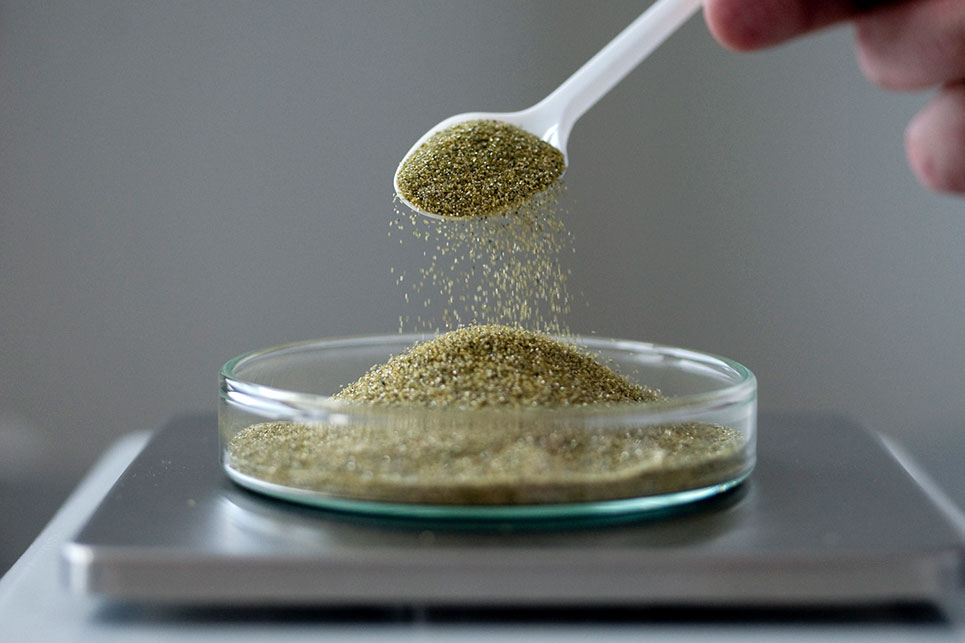
At present, the most common diamond powder is produced by grinding, purifying, classifying and other processes of artificial diamond.
Among them, the diamond crushing and shaping process plays an important role in the production of micro powder, and directly affects the shape of the micro powder particles and the content of the target particle size. Different crushing methods will produce different crushing effects. The scientific and reasonable crushing and shaping process can not only quickly crush coarse-grained diamond raw materials (conventional particle size 100-500 microns) into diamond powder particles with a particle size range of approximately (0-80 microns), but also optimize the particle shape. , making the particles of micro powder products more round and regular, reducing or even completely eliminating long strips, flakes, pins and rods and other particles that affect the final quality of micro powder. Maximize the proportion of marketable target particle size output.
In the production of micro powder, the crushing method can be divided into dry method and wet method. Different crushing and shaping methods are used, and their working principles and process parameters are also different.
Process control points of dry grinding method of ball mill
Taking the horizontal ball mill dry grinding method as an example, the main process control points are ball mill speed, ball-to-material ratio, filling coefficient, steel ball ratio, etc. In actual production, they can be flexibly controlled according to different raw materials and the purpose of crushing and shaping.
1. Ball mill speed
The reasonable rotation speed of the ball mill is an important condition for exerting its production capacity. When the diameter of the ball mill barrel is the same. The higher the rotational speed, the greater the centrifugal force generated, and the higher the distance the steel ball is driven to rise along the cylinder wall.
It is generally believed that the suitable working speed of the ball mill is 75%-88% of the theoretical critical speed.
2. Filling coefficient, ball-to-material ratio
In the crushing and shaping process, the appropriate ball-to-material ratio and filling coefficient are crucial. If the ball-to-material ratio and filling coefficient are too high or too low, they will affect the production efficiency and product quality of the ball mill. If the ball-to-material ratio is too high or the filling coefficient is too low, the feeding capacity of a single machine will be restricted.
Practice has proved that for the crushing of diamond raw materials, the loading coefficient is generally 0.45. The ratio of ball to material is 4:1.
3. Steel ball diameter and ratio
In order to crush diamond more effectively, when the ball mill filling coefficient and ball loading amount are determined, steel balls of different diameters should be selected and assembled in proportion to obtain better particle shape and faster crushing and shaping efficiency.
Segmented grinding
In the production process of micro powder, wet crushing is more effective than dry crushing. Because when dry crushing reaches a certain fineness, wall sticking is easy to occur, reducing the crushing effect; with wet crushing, the raw materials always exist in the form of slurry, and it is easy to increase the proportion of fine particle size.
In order to control the particle size ratio, when more fine-grained micro powder needs to be produced, segmented crushing should be used, especially wet segmented crushing is better. This can not only avoid excessive crushing of materials, but also achieve segmentation according to strength during the crushing process.
Jet milling
Another crushing method is the airflow pulverizer crushing method. The airflow pulverizer uses compressed air as the working medium. The compressed air is sprayed into the crushing chamber at high speed through a special supersonic nozzle. The airflow carries the material in high-speed movement, causing the material to move between them. Produce strong collision, friction and shear to achieve the purpose of crushing. Fragmentation occurs when the force acting on the particle is greater than its failure stress. High-speed impact collision causes volumetric fragmentation of particles, while shearing and grinding effects cause surface fragmentation of particles. This crushing method is very beneficial to the production of diamond powder because it can produce ideal particle shapes. The biggest advantage of the airflow pulverizer is that it is not limited by the mechanical linear speed and can produce very high airflow speeds. In particular, the supersonic airflow pulverizer can produce a flow rate several times the speed of sound, so it can generate huge kinetic energy and it is easier to obtain micron-level particles. and submicron ultrafine powders.
Sodium Bicarbonate Dry Desulfurization Process
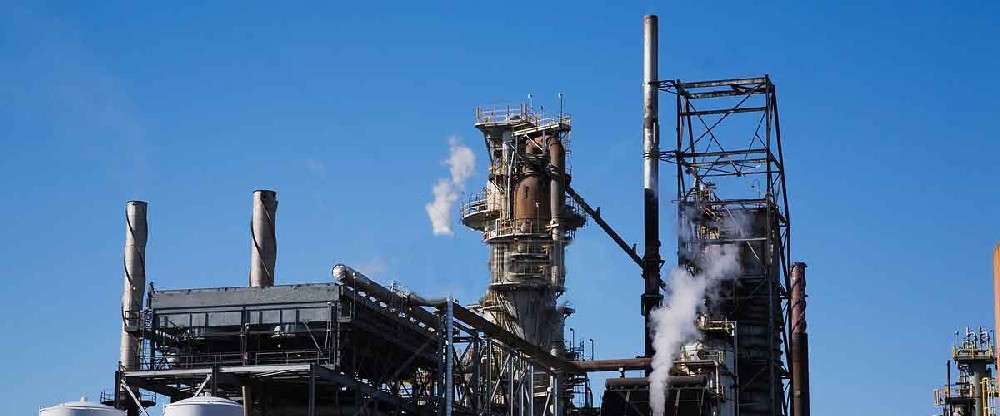
The dry desulfurization process uses a pulverizer with its own classification system and a conveyor fan combined into a complete grinding and powder spraying device. The pulverized sodium bicarbonate fine powder has a layered or porous structure, uniform particle size, and good dispersion. The solid ultrafine powder is then directly injected into the furnace or reaction tower through multiple nozzles. It can effectively remove more than 95% of SO2 and HCl in exhaust gas, and the removal rate can even reach 99%.
The use of sodium bicarbonate (baking soda) dry desulfurization can not only meet stringent environmental requirements, but also effectively reduce investment and operating costs compared with other flue gas purification methods.
The baking soda dry desulfurization process has the following advantages: fully dry system, no water required; dry powder is sprayed in front of pipes and bags; reaction by-products can be discharged through the dust removal system; no production shutdown is required; one-time investment is very small; and it occupies very little area ; System cost is low; competitive; reaction efficiency is very high, over-injection volume is very small, and undetectable emissions can be achieved; denitration catalyst poisoning is effectively suppressed; flexibility is high, and it can be adapted to the most stringent emission indicators at any time.
Sodium bicarbonate (baking soda, NaHCO3) can be used as an adsorbent for flue gas desulfurization. It removes acidic pollutants in flue gas through chemical adsorption. At the same time, it can also remove some inorganic and organic trace substances through physical adsorption. In this process, sodium bicarbonate fine powder is directly sprayed into the high-temperature flue gas of 140 to 250°C.
In the flue gas pipe, the desulfurizer - baking soda (NaHCO3) - is activated under the action of high-temperature flue gas, forming a microporous structure on the surface, just like popcorn being popped. The flue gas in the flue fully contacts the activated desulfurization agent to undergo a chemical reaction. , SO2 and other acidic media in the flue gas are absorbed and purified, and the desulfurized and dried Na2SO4 by-product enters the bag dust collector with the air flow and is captured.
The newly generated sodium carbonate Na2CO3 is highly reactive at the moment of generation and can spontaneously undergo the following reactions with acidic pollutants in flue gas:
Main reactions:
2NaHCO3(s)→Na2CO3(s)+H2O(g)+CO2(g)
SO2(g)+Na2CO3(s)+1/2O2→Na2SO4(s)+CO2(g)
Side reactions:
SO3(g)+Na2CO3(s)→Na2SO4(s)+CO2(g)
5 major types of surface modification methods for silica
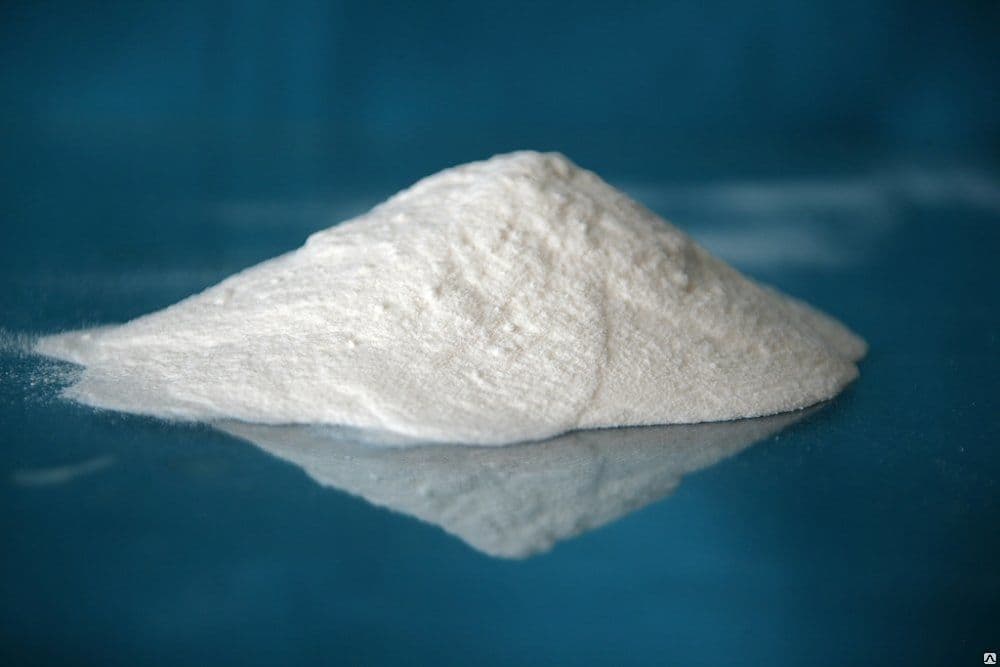
At present, the industrial production of silica is mainly based on precipitation method. The surface of the produced silica contains a large number of polar groups such as hydroxyl groups, which makes it easy to absorb water molecules, has poor dispersion, and is prone to secondary aggregation. problems, thus affecting the industrial application effect of silica. Therefore, most silica needs surface modification treatment before industrial application to improve its industrial application performance.
At this stage, chemical surface modification of silica mainly includes surface graft modification, coupling agent modification, ionic liquid modification, macromolecular interface modification and combined modification, etc. Although each modification process has its own advantages. and characteristics, but currently in industrial applications it is mainly based on coupling agent modification.
The principle of the surface graft modification method is to graft a macromolecular polymer with the same properties as the matrix polymer (such as rubber) on the surface of silica through chemical grafting. On the one hand, it can enhance the interaction between the particles and the matrix. And change the polarity of the particle surface, on the other hand, it can also improve the dispersion of silica itself. It is suitable for grafting polymers with smaller molecular weights. The conditions for grafting polymers with higher molecular weights are harsh.
2. Modification of silica coupling agent
The principle of coupling agent modification is to use some functional groups on the coupling agent to react chemically with the hydroxyl groups on the surface of silica black, thereby changing the group structure and distribution on the surface of silica black to improve compatibility with the matrix. and its own dispersion. Coupling agent modification has the advantages of good modification effect and high reaction controllability, and is currently one of the most widely used modification methods.
3. Silica black ionic liquid modification
Ionic liquids, also called room temperature ionic liquids, are molten salts composed of organic cations and organic or inorganic anions, which are liquid below 100°C. Ionic liquid modification uses ionic liquid modifiers instead of traditional organic phase modifiers to modify silica. Compared with traditional organic phase modifiers, ionic liquid phases are liquid at room temperature, have strong conductivity, and have high stability. It has the advantages of good solubility, non-volatility and low pollution, which is more in line with the requirements of green production, but the modification effect is poor.
4. Interface modification of white carbon black macromolecules
The modifier used in macromolecular interface modification is a macromolecular polymer containing polar groups. During the modification reaction with silica particles, the molecular backbone of the macromolecular interface modifier can be introduced into It has more polar epoxy groups while maintaining the basic main chain structure, thereby improving the compatibility between the silica particles and the matrix and achieving better interface modification effect. This method can synergistically reinforce the matrix with the coupling agent, but the reinforcing effect is low when used alone.
5. White carbon black combined with modification
Combining modification is to modify the combination of silica and other materials, combining their respective advantages to improve the overall performance of rubber products. This method can combine the advantages of two modifiers to enhance the comprehensive performance of the matrix, but the modification effect is closely related to the modifier ratio.
For example, carbon black and silica are both good reinforcing agents in the rubber industry. Carbon black is one of the most commonly used reinforcing agents in the rubber industry. The special structure of carbon black can enhance the tensile and tear strength of rubber materials and Improve its wear resistance, cold resistance and other properties; as a reinforcing agent, white carbon black can significantly improve the rolling resistance and wet slip resistance of rubber products, but its effect alone is not as good as carbon black. A large number of studies have shown that the use of carbon black and silica as reinforcing agents can combine the advantages of both to improve the overall performance of rubber products.
Characteristics And Economic Uses Of Dolomite Mineral
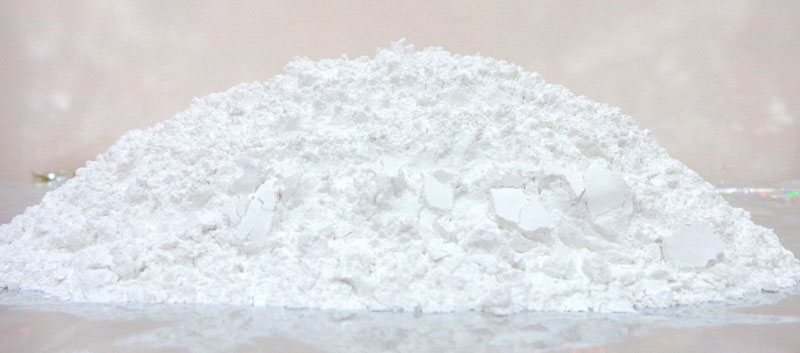
Dolomite crystal is a carbonate mineral of the trigonal crystal system. Its chemical composition is CaMg(CO3)2, often with iron, manganese and other similar isomorphs (instead of magnesium). When the number of iron or manganese atoms exceeds that of magnesium, it is called ankerite or manganese dolomite. Trigonal crystal system, the crystal is rhombohedral, the crystal face is often bent into a saddle shape, and laminated twin crystals are common. The aggregates are usually granular. It is white when pure; gray when containing iron; brown after weathering. Glass luster. It is the main mineral that makes up dolomite. Dolomite originating from marine sedimentation is often interbedded with siderite layers and limestone layers. In lacustrine sediments, dolomite coexists with gypsum, anhydrite, halite, potassium halite, etc.
The word Dolomite is mainly used to commemorate DOLOMIEU (1750~1843), a French chemist. Dolomite is a trigonal crystal system with a chemical composition of CaMg(CO3)2. It is mainly a mineral composed of calcium carbonate and magnesium carbonate (the ratio of CaCO3 to MgCO3 is approximately 1:1). It has complete cleavage and rhombohedral crystallization. . The colors are mostly white, gray, flesh-colored, colorless, green, brown, black, dark pink, etc., transparent to translucent, with glass luster, hardness 3.5-4, specific gravity 2.85-2.9. I remember when I went out to Hualien during my college days, I always couldn’t figure out how to distinguish between dolomite and marble on the beach. If you have a can of cold dilute hydrochloric acid nearby, you can do the trick. Massive dolomite is not prone to bubbles when exposed to cold dilute hydrochloric acid, while marble will immediately emit many tiny bubbles.
Dolomite can be used as the refractory inner layer of reformer furnaces used in steelmaking, slag-forming agents, cement raw materials, glass fluxes, kilns, fertilizers, construction and decorative stones, paints, pesticides and medicines, etc. It can be used in the fields of building materials, ceramics, glass and refractory materials, chemical industry, agriculture, environmental protection, energy saving and other fields.
Dolomite bricks are refractory products made of calcined dolomite sand. It usually contains more than 40% of calcium oxide (CaO), more than 35% of magnesium oxide (MgO), and also contains a small amount of silicon oxide (SiO2), aluminum oxide (Al2O3), ferric oxide (Fe2O3) and other impurities. The CaO/MgO ratio of natural dolomite fluctuates greatly. If the CaO/MgO ratio in the brick is less than 1.39, it is called a magnesia dolomite brick. According to the production process, dolomite bricks can be divided into: tar (asphalt) combined unburned bricks, light burned oil-immersed bricks and fired oil-immersed bricks. Dolomite bricks contain free CaO, which is prone to hydration and cracking in the air and is not suitable for long-term storage.
China's converter lining mainly uses tar-bonded dolomite bricks and tar-bonded magnesia dolomite bricks. Some factories use light-burned oil-impregnated and fired oil-impregnated magnesia dolomite bricks in vulnerable parts. Converters in countries such as Western Europe and Japan mainly use tar combined with heat-treated and fired oil-impregnated dolomite bricks and magnesia dolomite bricks. In addition, fired oil-impregnated magnesia dolomite bricks are also used as linings for some external refining furnaces.
Grinding and modification of ultrafine mica powder
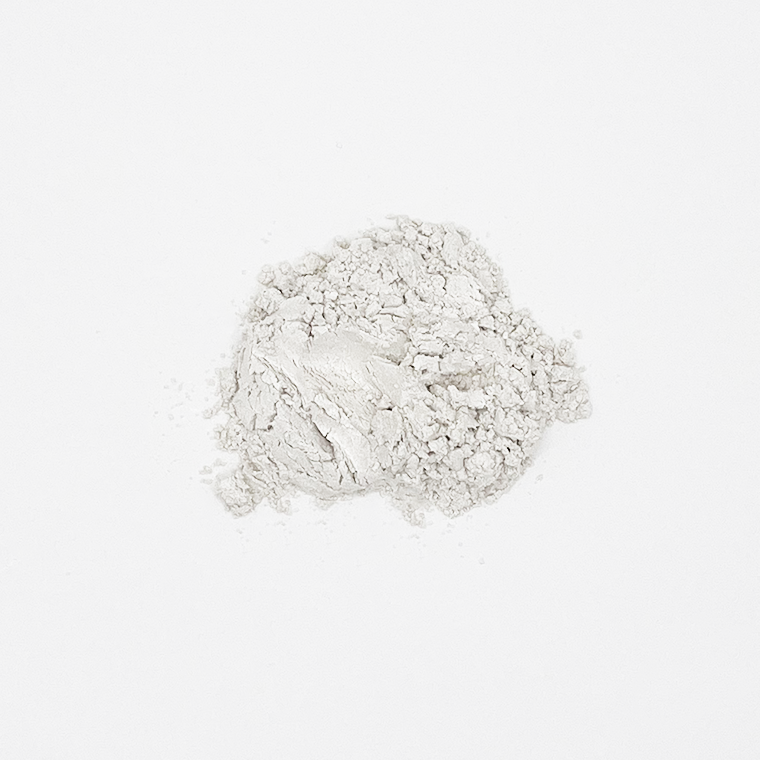
With the development of industry, downstream application companies have increasingly higher requirements for the quality of mica powder. Currently, muscovite powder with a D90 of about 45 μm is mainly used in papermaking, latex paint, rubber and other industries, while high-end coatings, pearlescent mica and other products are The particle size of mica powder has put forward higher requirements, and the preparation of micro-nano-level ultra-fine mica powder is urgent.
During the grinding process, muscovite can still be tightly combined along the fresh surface after interlayer cleavage. It is one of the more difficult minerals to grind. Currently, micro-nano-level muscovite ultrafine powder is difficult to prepare using conventional grinding equipment. Many domestic mica manufacturers will mine high-quality muscovite and simply coarsely grind it for export. Others will be made into muscovite products with D90 particle size of about 45μm or even coarser, resulting in a waste of resources and reducing product competitiveness.
Mica ultrafine grinding preparation
At present, the ultra-fine grinding process of mica is divided into two grinding methods: dry method and wet method. Among them: the main equipment for dry ultra-fine grinding include high-speed mechanical impact mill, airflow mill, cyclone or cyclone flow autogenous grinding machine, etc. and the corresponding dry airflow classifier; the production equipment for wet grinding sericite powder includes sand mill, grinding machine, etc. Flaking machines and colloid mills are the main ones, while wet fine classification uses hydrocyclone classification technology.
The high-speed planetary roller mill can effectively perform dry and wet grinding of mica. The median diameter of the particles after grinding can reach 10 μm or less; the mica material stays in the grinding for a very short time, generally 5-10s. ; By adjusting the roller structure, mica powder with the required diameter-thickness ratio can be obtained. Under wet grinding conditions, mica powder can obtain a diameter-thickness ratio in the range of 20-60.
The stirring mill adopts special grinding media, which has good application effect in ultra-fine peeling of mica powder without damaging the surface of mica, and can make the diameter-thickness ratio of mica powder >60.
Mica powder surface coating or modification
The surface coating or modification of mica powder can prepare pearlescent mica and colored mica pigments to improve their corresponding properties in materials such as rubber and coatings. There are also many related studies.
Mica is surface-coated to prepare pearlescent mica and colored mica pigments. Currently, the liquid phase deposition method is mainly used. Common methods include alkali addition, thermal hydrolysis, buffering, etc. Commonly used coating agent titanium sources in industry are titanium tetrachloride and titanyl sulfate.
Application of mica powder
Mica powder can be used in fields such as electrical insulation materials, functional coating fillers, rubber fillers, plastic fillers, cosmetics and welding materials.
Using silicon nitride ceramics as raw material for mobile phone backplanes
![]()
As smartphone technology continues to develop and competition intensifies, mobile phone manufacturers have launched various new designs and innovations to attract more consumers, and ceramic backplanes are one of the tricks. Its emergence began in 2012 when Sharp launched a smartphone with a ceramic backplane. However, due to technical and cost issues, ceramic backplanes were only used in a few high-end brands at that time. However, with the development of processing technology, the application range of ceramic backplanes is becoming wider and wider.
In the field of ceramic backsheets, the protagonists are almost all zirconia ceramics, but recently researchers seem to have begun to think about silicon nitride. Compared with zirconia, silicon nitride is considered by researchers to be a superior and promising mobile phone backplane material, especially whisker-toughened silicon nitride ceramics. The reasons are as follows:
picture
(1) Silicon nitride ceramics have higher impact toughness, are not easily broken, are not easily damaged during machining, and have a higher yield;
(2) Silicon nitride ceramic has high thermal conductivity, which is more than 10 times that of zirconia ceramic, and it is easier to dissipate heat. Therefore, the heat generated when the mobile phone is running at high speed or the battery is charging and discharging is easy to dissipate, which is beneficial to the normal operation of the mobile phone. Avoid slowdowns and other phenomena;
(3) The dielectric loss of silicon nitride ceramics is two orders of magnitude lower than that of zirconia, making it more transparent to mobile phone signals and making it easier to communicate smoothly in environments with weak signals;
(4) Silicon nitride ceramic has higher hardness and lower density than zirconia, which can effectively reduce the quality of the fuselage, and its cost is close to that of zirconia;
(5) Silicon nitride ceramic is a colorless ceramic, which is relatively easy to color and has good coloring effect. It also has a jade-like texture and is suitable for use in, for example, mid-to-high-end mobile phone casings.
Therefore, the use of silicon nitride ceramic materials as communication device mobile phone backplane materials can, to a certain extent, make up for the shortcomings of current zirconia mobile phone backplane materials, and does have certain prospects.
Although there are not many reports on silicon nitride mobile phone backplane materials, it has been used as a structural ceramic for a long time and has fully proven its application stability and reliability in harsh environments such as automobile engines. If silicon nitride is used as a new mobile phone backplane material, it not only has the same excellent mechanical properties as zirconia, but also has the advantages of good texture, light weight, and more sensitive signals. It is a new mobile phone backplane material with great potential.
At present, the key to breakthrough lies in how to optimize the process to make Si3N4 ceramics not only easy to dissipate heat and rich in color, but also the preparation process can be simple and reliable, and the cost becomes acceptable. If the above difficulties can be overcome, perhaps one day in the future we will be able to see Si3N4 on smartphone backplanes and smart wearable devices.

